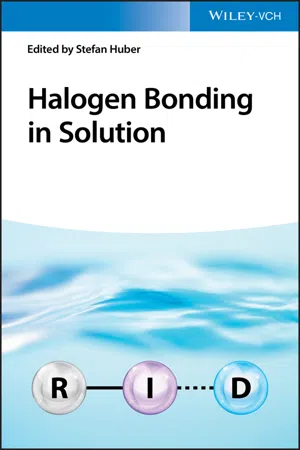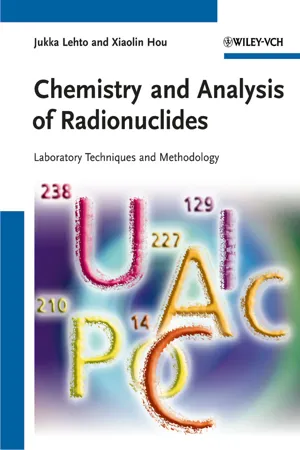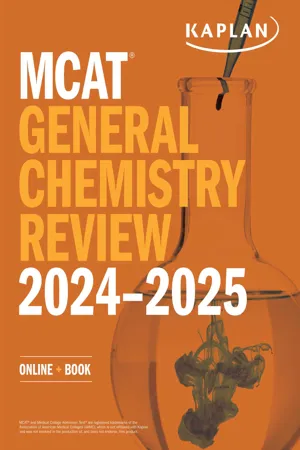Chemistry
Halogens
Halogens are a group of non-metal elements that include fluorine, chlorine, bromine, iodine, and astatine. They are highly reactive and are known for their ability to form salts when they react with metals. Halogens are commonly used in various industrial and commercial applications, such as disinfectants, water treatment, and the production of plastics and pharmaceuticals.
Written by Perlego with AI-assistance
Related key terms
Related key terms
1 of 4
Related key terms
1 of 3
4 Key excerpts on "Halogens"
- eBook - ePub
Occupational Exposures
Chemical Carcinogens and Mutagens
- Frances Alston, Onwuka Okorie(Authors)
- 2023(Publication Date)
- CRC Press(Publisher)
Chapter 6 Halogenated compoundsDOI: 10.1201/9781003220114-66.1 Introduction
The chemicals that are known as Halogens are listed in group 17 of the periodic table. These elements are fluorine (F), chlorine (Cl), bromine (Br), iodine (I), and astatine (At). Together, these elements form what is commonly known as the halogen group. Astatine has no natural or synthetic isotopes that can be considered stable2 ,3 and will not be of focus in this chapter. Fluorine (F2 ) has the highest crustal abundance of the Halogens (544 mg/kg) while iodine has the lowest (0.25 mg/kg). Chlorine is the most abundant halogen in the universe. The chemical composition of the four naturally occurring Halogens has some similarities with fluorine, chlorine, and bromine being classified as lithophile elements while iodine has a more chalcophile nature. Iodine and chlorine are essential elements for mammals, and fluorine has been shown to have beneficial effects on bone and tooth formation.4 ,5Fluorine is the most electronegative and most reactive of all the periodic elements. It can form binary compounds with all other elements apart from helium, neon, and argon. It is a pale-yellow, highly reactive gas and a strong oxidant. Fluorine is a toxic irritant that attacks the skin and the mucous membranes of the exposed individual’s nose and eyes.7 Fluorine chemistries have important industrial uses. For example, preparation of Freons in the 1930s was a major advance in the refrigeration field. F2 has also increasingly become an important laboratory reagent for the synthesis of some fluorinated molecules, many having important biological and medical applications.3Chlorine gas is produced commercially by electrolysis of sodium chloride (NaCl) brine in asbestos diaphragm cells or mercury cathode cells. Of all the Halogens, Cl2 has the most expansive industrial use and is ranked high among the large volume of chemicals manufactured in the United States in 1979. Some primary uses include the production of organic compounds; use in bleaches for paper, pulp, and textile, sanitation, and disinfection of water supplies; and production of inorganic chemicals. Chlorine gas (Cl2 ) reacts with water to produce strong oxidizing solution. This reaction can damage the moist tissue lining of the respiratory tract when exposed to chlorine.7 - eBook - ePub
- Stefan Huber(Author)
- 2021(Publication Date)
- Wiley-VCH(Publisher)
1 Halogen Bonding: An Introduction Daniel A. Decato, Eric A. John, and Orion B. Berryman University of Montana, Department of Chemistry and Biochemistry, 32 Campus Drive, Missoula, MT, 59812 USA 1.1 Introduction The group 17 elements, known as Halogens, are diatomic species in their elemental form with the chemical formula X 2 (where X = F, Cl, Br, I) 1. In nature, they are seldom found in this manner due to their reactivity and thus are often presented as covalent or ionic species. However, the physical state of diatomic Halogens provides initial insight into their capacity for noncovalent interactions. Moving down group 17, the elemental species exist in different phases from gas (F 2 and Cl 2) to liquid (Br 2) to solid (I 2). For simplicity, this observation is attributed to greater intermolecular dispersion forces afforded by the larger, more polarizable Halogens and is quantifiable by physical properties such as boiling and melting point. This is the explanation that young chemists generally receive when being introduced to halogenated species and their physical properties. Later, in many organic curricula, these elements are presented as covalently bound components of molecules and are discussed within the context of molecular and bond dipoles, often in conjunction with concepts of electronegativity. Once again, the enhanced dispersion capacity of the Halogens is often highlighted, explaining the higher boiling points of haloalkanes over hydrocarbons of comparable size and shape (e.g. ethane bp = −89 °C and bromomethane bp = 4 °C). Ultimately, the role of Halogens in noncovalent interactions is neglected, giving way to their participation in classic reactions such as radical, substitution, and elimination pathways, which predictably leads to the misconception that Halogens are simply electronegative leaving groups. This oversight is often reinforced in upper‐level courses, where Halogens are shown to be the reactive site in many cross‐coupling reactions - eBook - ePub
Chemistry and Analysis of Radionuclides
Laboratory Techniques and Methodology
- Jukka Lehto, Xiaolin Hou(Authors)
- 2011(Publication Date)
- Wiley-VCH(Publisher)
, require radiochemical separations before measurement.Table 11.1 Important halogen radionuclides11.2 Physical and Chemical Properties of the HalogensHalogens are nonmetals and are located in group 17 of the periodic table with the electron structure [Ng]ns2 np5 . There are seven electrons in the outermost shell, that is they have the octet structure of the noble gases but with one electron missing. As a result, they readily form negative ions with a single charge and have the oxidation state of −I (F− , Cl− , Br− , I− , At− ). In the case of fluorine, −I is, in practice, the only oxidation state. The Halogens are extremely electronegative, fluorine being the most electronegative element of all. Salts formed with these negative ions of single charge, the halides, are highly soluble, and solubility increases with the atomic number. In higher oxidation states, the Halogens also form oxoacids. For example, in the oxidation state +V, iodine forms iodic acid, whose anion is iodate (IO3 − ), and in the oxidation state +VII it forms periodic acid, whose anion is periodate (IO4 − ). As seen from Figure 11.1 , iodide is the predominant chemical form. Iodate is present in oxidizing conditions in alkaline solutions. Formation of periodate requires oxidizing conditions more extreme than any found in natural systems. Chlorine most commonly appears in solution as the chloride ion, Cl− , and the perchlorate ion, ClO4 − , can only be found in very oxidizing conditions, again not found in natural systems (Figure 11.1 ). The Halogens can also be in the form of gases (F2 , Cl2 , Br2 , I2 , At2 - No longer available |Learn more
MCAT General Chemistry Review 2024-2025
Online + Book
- (Author)
- 2023(Publication Date)
- Kaplan Test Prep(Publisher)
chalcogens (Group VIA or Group 16) are an eclectic group of nonmetals and metalloids. While not as reactive as the Halogens, they are crucial for normal biological functions. They each have six electrons in their valence electron shell and, due to their proximity to the metalloids, generally have small atomic radii and large ionic radii. Oxygen is the most important element in this group for many reasons; it is one of the primary constituents of water, carbohydrates, and other biological molecules. Sulfur is also an important component of certain amino acids and vitamins. Selenium also is an important nutrient for microorganisms and has a role in protection from oxidative stress. The remainder of this group is primarily metallic and generally toxic to living organisms. It is important to note that, at high concentrations, many of these elements—no matter how biologically useful—can be toxic or damaging.BRIDGE
Many of the molecules discussed in metabolism, covered in Chapters 9 through 12 of MCAT Biochemistry Review, utilize lighter nontoxic elements from the chalcogen group (oxygen and sulfur). Many of the heavier chalcogens are toxic metals.Halogens (VIIA)
The Halogens (Group VIIA or Group 17) are highly reactive nonmetals with seven valence electrons. These elements are desperate to complete their octets by gaining one additional electron. The physical properties of this group are variable. At standard conditions, the Halogens range from gaseous (F2 and Cl2 ) to liquid (Br2 ) to solid (I2 ) forms. Their chemical reactivity is more uniform, and, due to their very high electronegativities and electron affinities, they are especially reactive toward the alkali and alkaline earth metals. Fluorine (F) has the highest electronegativity of all the elements. The Halogens are so reactive that they are not naturally found in their elemental state but rather as ions (called halides) or diatomic molecules. Diatomic iodine at standard conditions can be seen in Figure 2.12.Figure 2.12. Iodine in Standard State (Diatomic Iodine)MCAT EXPERTISE
Halogens are frequently tested on the MCAT. Remember that they only need one more electron to have a noble gas-like electron configuration (full valence shell).
Index pages curate the most relevant extracts from our library of academic textbooks. They’ve been created using an in-house natural language model (NLM), each adding context and meaning to key research topics.
Explore more topic indexes
Explore more topic indexes
1 of 6
Explore more topic indexes
1 of 4



